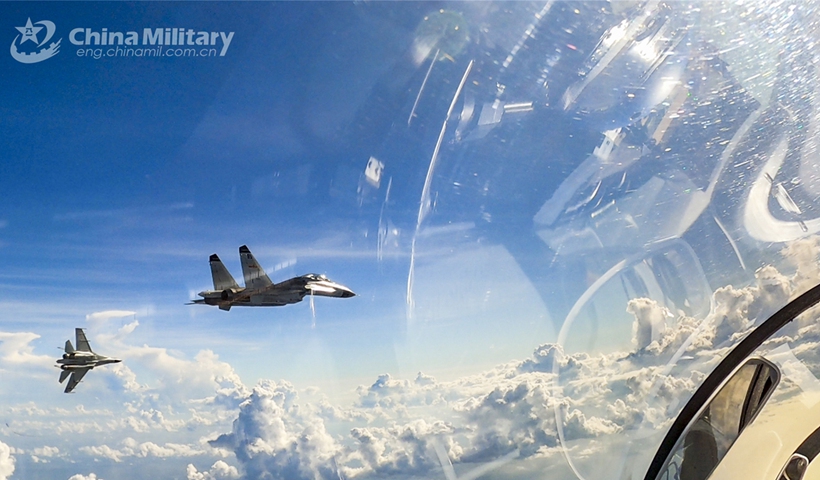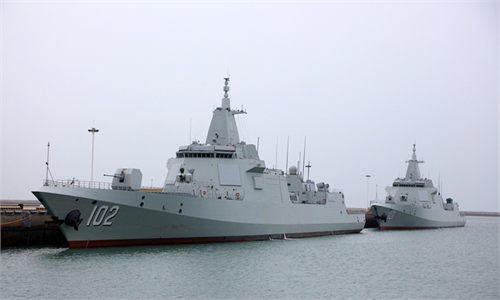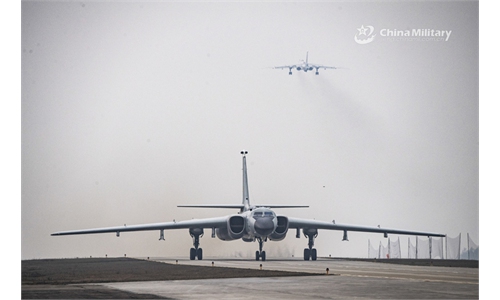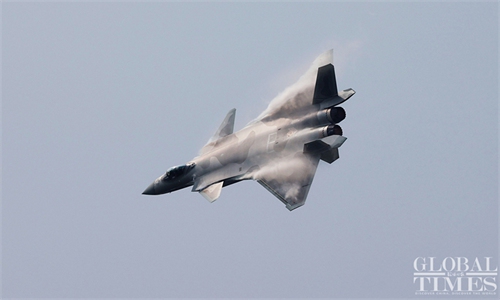US maintains intensive military ops around China with 1,000 close-in recon attempts in 2022 despite Ukraine crisis: report

Fighter jets attached to a naval aviation brigade under the PLA Southern Theater Command fly in formation during a day-and-night flight training exercise in early March, 2023. (eng.chinamil.com.cn/Photo by Fu Jinquan)
The US has maintained intensive military activities around China despite the outbreak of the Ukraine crisis in 2022, a situation that experts said on Tuesday will only provoke China and lead to more countermeasures that go against the US' wishful thinking.
Even against the background of the Russia-Ukraine conflict, the US military stressed military deterrence against China, maintained a high level of close-in reconnaissance operations in the South China Sea, and sent vessels and aircraft through the Taiwan Straits, the South China Sea Strategic Situation Probing Initiative (SCSPI), a Beijing-based think tank, said in an annual report on US military activities in the South China Sea last year, which was published on Monday.
The record shows that the US conducted about 1,000 large reconnaissance aircraft sorties over the South China Sea in 2022, with many of them reaching as close as 13 nautical miles from China's territorial sea baseline, the SCSPI report said. A country's territorial sea extends 12 nautical miles from its baseline, so it shows how near the US close-in reconnaissance attempts were to China, observers said.
In addition, US Carrier Strike Groups and Amphibious Ready Groups entered the South China Sea eight times, and US nuclear-powered attack submarines were spotted in and around the region at least 13 times, according to the think tank.
With then US House speaker Nancy Pelosi provocatively visiting the island of Taiwan in August 2022, the tensions in the Taiwan Straits escalated significantly, and the US military's forward deployment in the South China Sea also closely worked with those in the Taiwan Straits and the East China Sea, the SCSPI said.
The frequency and intensity of US military activities in the South China Sea against China have kept rising since 2009, even in 2022 when the Russia-Ukraine crisis broke out. This significantly increased the risks of potential maritime or aerial friction between China and the US, the think tank said.
In the Ukraine crisis, the US actually did not substantially increase its military presence in Europe, because it has its NATO allies and Ukraine fighting a proxy war. But in the Asia-Pacific region, the US has to lead the front and have its allies follow to confront China, Song Zhongping, a Chinese military expert and TV commentator, told the Global Times on Tuesday.
The SCSPI pointed out that the US also increasingly politicized its military activities, intentionally raising media exposure of its operations related to China, and several times hyped rightful interceptions from China as "dangerous" or "unprofessional." This raises the question, was it the Chinese interceptions that came too close to US vessels and aircraft, or was it the US vessels and aircraft that came too close to China in the first place?
In peacetime, conducting highly intensive military activities in a country's surrounding waters, including about 1,000 sorties of close-in reconnaissance operations and hundreds of military exercises, is against the spirit of the UN Charter and the UN Convention on the Law of the Sea, the SCSPI wrote in the report.
Excessive US deterrence and provocations on China will only result in more resolute countermeasures that go beyond the US' wishful thinking, said the SCSPI.
China must prepare for and counter US pressures both strategically and tactically, Song said.
From a strategic point of view, China should continue to increase its comprehensive national strength, including in science and technology, as well as the national defense sector.
From a tactical point of view, the Chinese armed forces should enhance their combat readiness and resolutely safeguard national sovereignty, security and development interests, analysts said.




